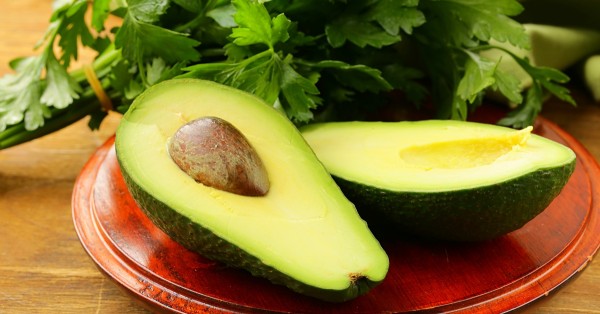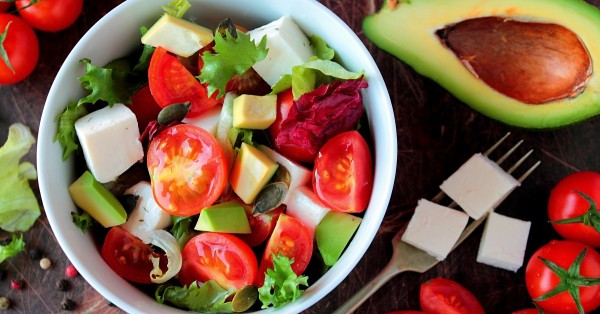
7 Benefits Of Eating Avocado
Avocado is one of the most popular “superfoods,” and it’s easy to see why everyone is so enamored with the fruit — it’s rich, creamy, and delicious. But did you also know that it’s crammed with 20 different nutrients and good fats?
You can even use it topically as a moisturizer for your skin and hair.
Read on to learn more about this amazing food!
The Benefits:
1. Reduces Cholesterol: Avocados are full of good fats, and this is its main claim to fame. A cup of sliced avocado provides 32% of your daily fat recommendation — but it’s monounsaturated fat, which helps lower cholesterol. This, in turn, helps lower your risk of heart disease and stroke. They also contain phytosterols, which have anti-inflammatory properties.
2. Lowers Blood Pressure: One cup of sliced avocado provides 20% of your daily potassium (double what you get in a banana) and 10% of your daily dose of magnesium — both of which are crucial in controlling blood pressure. Potassium helps control blood pressure by relaxing your arteries, and ridding the body of excess sodium. Too much sodium leads to fluid retention, which makes you bloated. Magnesium is required for nerve and muscle function, as well as bone growth and maintenance. You know when you get a charley horse (or muscle spasm) in your calf and your dad tells you that you need to eat more bananas? Chop up an avocado instead!
3. Helps You Feel “Full”: A new study shows eating one avocado a day can help staunch your cravings if you are overweight. A cup of avocado contains a whopping 40% of your daily dietary fiber, which helps keep you feeling fuller for longer. Avocados contain both soluble and insoluble fiber, which your digestion system needs to function properly.
4. Aids In The Absorption Of Other Nutrients: Key vitamins like vitamin A, D, E, and K are fat soluble — meaning they need fat to be absorbed in the body. That’s why adding avocado to salads or vegetable-heavy dishes can aid in nutrient absorption.
5. Eye Health: Lutein and zeaxanthin are carotenoids that are crucial for overall eye health. They help protect your eyes against harmful light waves, and decrease your risk of eye diseases like macular degeneration.
6. Health During Pregnancy: One cup of avocado provides almost 25% of your recommended dose of folate, which is crucial during pregnancy and also helps lower your risk of heart attack.
7. Nutrients, Nutrients, Nutrients: Avocados contain 20 vitamins and minerals. One cup provides a quarter of your daily value of vitamin C, which plays a key role in the growth and repair of all bodily tissues. It also is chock-full of B-6, which helps fight off disease and infection, and aids in the production of serotonin and norepinephrine, chemicals that transmit signals in the brain.
The Downside:
Calorie Bombs: Avocados are packed with calories! The recommended serving size is 1/5 of an avocado (1 ounce) — which is 50 calories. Try using avocado as a replacement for other fatty foods rather than tacking them on to your diet. Did you know you can even use avocado in baking? Simply replaced the fatty ingredients in your baked goods (like oil and butter) with the same amount of avocado.
How To Tell If It’s Ripe:
Did you know that avocados do not ripen or soften on the tree? Once they are picked, they typically take 2 to 7 days to ripen. When it’s ripe, an avocado will be darker green/purple in color, and be slightly soft when you squeeze it in your palm. You can check to see if it’s overripe by popping off the dried stem. If the flesh underneath is green, it’s ripe. If it’s brown, it is too ripe. (In this case, I still slice it open and check for any odd smells, and then scoop out the browned parts if its seems salvageable.)
To speed up the ripening process, place them in a brown paper bag with an apple or banana for a couple days at room temperature. To slow it down, simply keep them in the refrigerator.
The flesh of an avocado turns brown when exposed to oxygen, so if you need to store any leftovers, store them in an airtight container, and squeeze some citrus juice on it to help preserve it. Leaving the pit in is also known to help, because it covers part of the avocado and saves it from oxidation.
How To Use:
You can use avocado in so many dishes! Mash it up with a little salt, pepper, and garlic powder for easy guacamole, or dress up your guac by adding chopped red onion, tomato, jalapeno, and cilantro. (Try eating it with fresh veggies like carrots, tomatoes, and red pepper instead of tortilla chips for a healthier option.) Slice it up and add it to eggs or omelets, sandwiches, tacos, smoothies, dips, baked goods… there are so many options! They make great additions to Mexican, Spanish, and Thai cuisine, and add flair to salsas.
Bon appétit!


